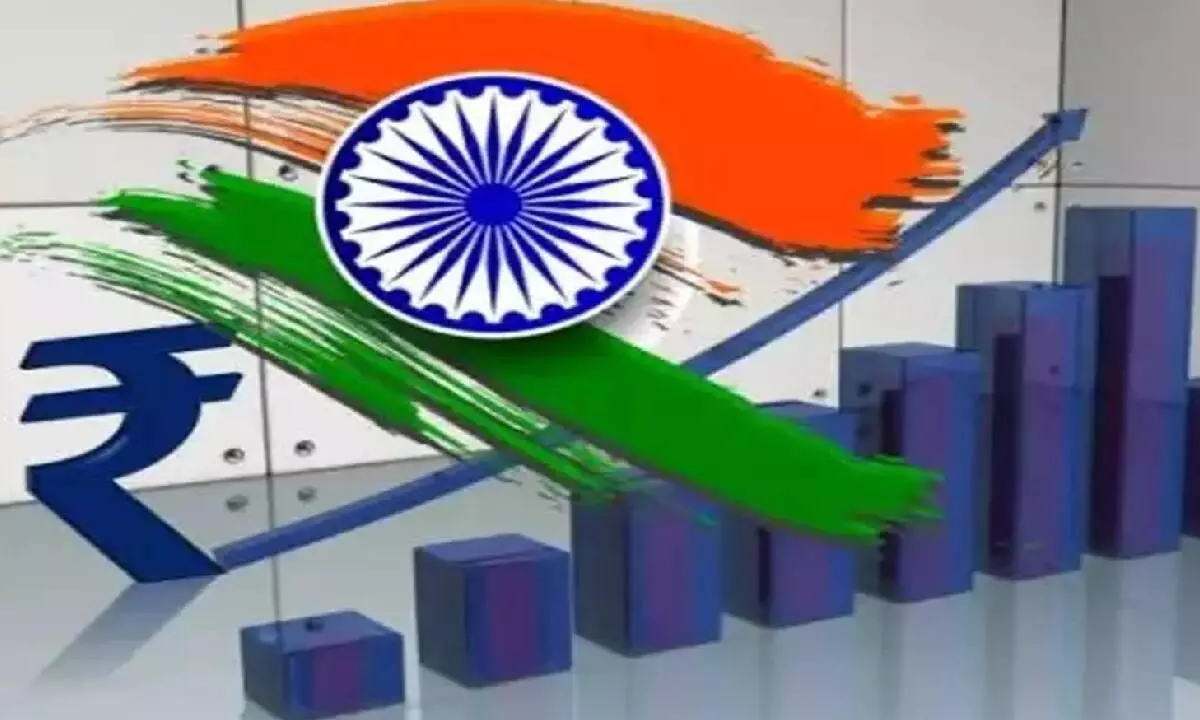India likely to grow at 6.2% in 2024, leaving peers behind: UN economist
India has consistently maintained a growth rate over 6%, a trend expected to continue in 2024 and 2025
image for illustrative purpose

With a projected growth rate of 6.2 per cent for 2024, the "Indian economy outperformed its peers" in a global economy which is expected to expand by only 2.4 per cent, according to the UN official monitoring the world economy.
India as the top performer among the major economies in the last few years has “seen that (its) backbone has consistently remained over 6 per cent and we believe this will continue in 2024 and 2025”, Hamid Rashid, the chief of the Global Economic Monitoring Branch, said at the release of the World Economic Situation and Prospects Report (WESP).
The report put India's gross domestic product growth in 2023 at 6.3 per cent, 0.5 per cent above the projection made in September, and projected it to be 6.2 per cent this year, 0.5 per cent less than the previous estimate.
Next year, India’s growth is expected to rise to 6.6 per cent, the report said. The growth pattern, the report said, will be “mainly supported by resilient private consumption and strong public investment”.
Shantanu Mukherjee, the Director of the UN Economic Analysis and Policy Division, indicated that India was likely performing at its best without the danger of its economy overheating.
Asked about factors that could be holding India back from faster growth, Mukherjee said amid laughter, “I am not sure that 7.7 per cent, 6.3 per cent, 6.2 per cent and 6.6 per cent is exactly holding something back”.
“So in fact, I think one would, in a kind of abstract sense one would run the risk of overheating [the] economy if you grew at much faster rates with the size and complexity of India”, he said. The report said that global economic growth is projected to slow from an estimated 2.7 per cent last year to 2.4 per cent this year.
The report expected the US growth to moderate to 1.3 per cent this year from 1.6 per cent last year before picking up to 1.7 per cent next year. The European Union, where the growth for last year was estimated to be a dismal 0.5 per cent, according to the report, is expected to increase to 1.2 per cent this year and 1.7 per cent next year.
China’s growth rate is expected to come down to 4.7 per cent from last year’s 5.3 per cent and further fall to 4.5 next year, it said. For the South Asia region in which the report includes Iran, last year’s growth rate was estimated to be 5.3 per cent, which will go down to 5.2 per cent this year, before rising to 5.7 per cent next year.
Rashid said there was a sign of a "little" shift towards South Asia emerging as a driver of global growth. South Asia is the region that "is becoming a major source of growth", he said.
"In the past, East Asia was the driver of growth, but now we see a little bit of shift towards South Asia [and] South Asia being the driver of growth going forward," he added.
Commenting on the Indian economy’s strong growth, he said that although inflation was relatively high, unlike many other countries New Delhi “didn't have to raise rates as much and inflation has come down quite a bit”.
"That has allowed the government to sustain the fiscal support that it needed," he said, and "we didn't see significant fiscal adjustments or fiscal sort of retrenchment in India. In practice, the support is still pretty strong".
Mukherjee added, "The government has also recently modernised, modified its tax collection systems and those have also certainly helped and given a more sort of stable playing field for businesses and other initiatives for progress."
“One of the reasons that the consumer price index in India remained relatively, you know, within bounds allowing this the central bank to not raise interest rates too much was that food prices and fuel prices remained relatively stable”, he said.
Listing risk factors, the report said that South Asia "is highly vulnerable to extreme weather conditions, the return of the El Nino climate phenomenon will also pose a significant risk to the economic outlook".
There is a consensus among international institutions around the 6.3 per cent mark for India’s growth rate in the current fiscal year. The International Monetary Fund (IMF) and World Bank in October and the Asian Development Bank (ADB) in September projected India’s growth rate for the 2023-24 fiscal year to be 6.3 per cent. For the next fiscal year, ADB forecasts 6.7 per cent growth for India, while the IMF kept it at 6.3 per cent and the World Bank projected 6.4 per cent.

